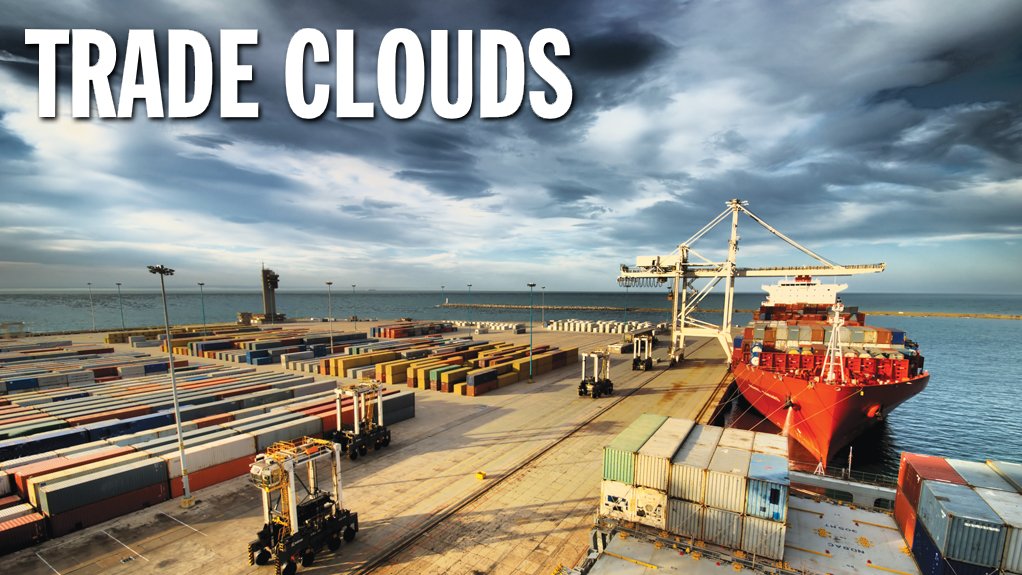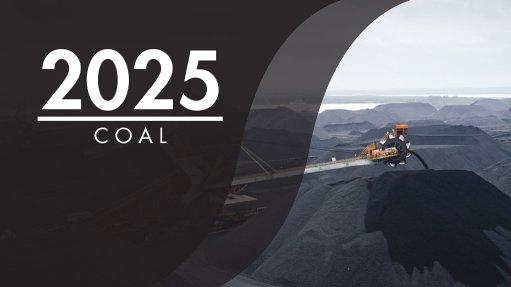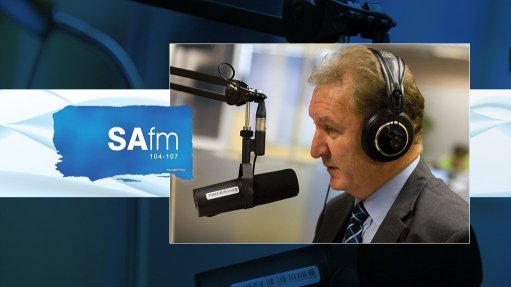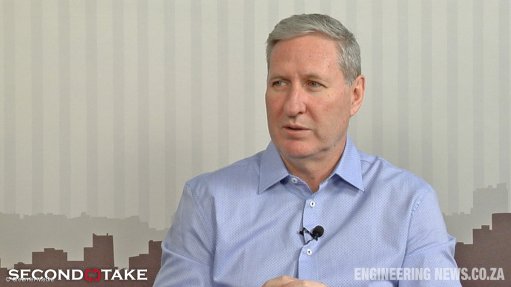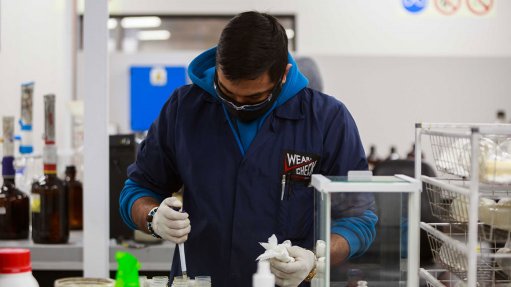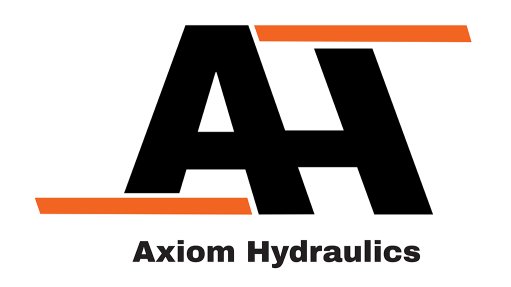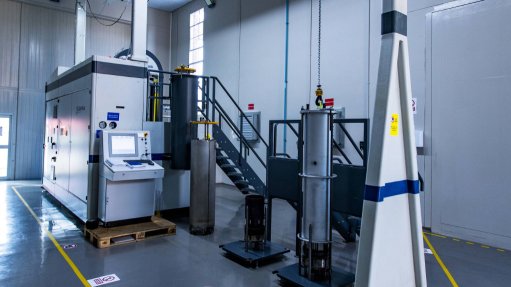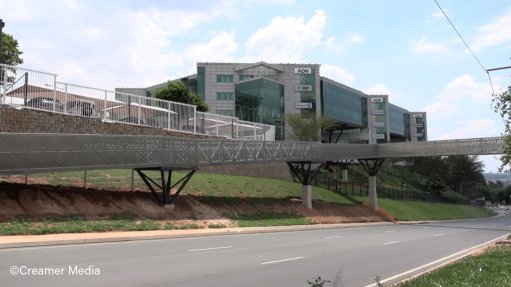Ramping up African trade seen as key coping strategy as Agoa-extension prospects fade
With the continuation of the African Growth and Opportunity Act (Agoa) beyond its expiry next month in serious doubt as the administration of re-elected US President Donald Trump shifts decisively towards reciprocal trade arrangements over multilateral agreements, dozens of sub-Saharan African countries look set to lose the preferential trade access to the lucrative American market they have enjoyed for more than two decades – a change that threatens jobs, export revenue and broader economic stability.
Enacted by the US Congress in May 2000 as a key platform for US-Africa trade relations, Agoa has enabled qualifying sub- Saharan African countries to export 1 800 product lines to the US duty- and quota-free – in addition to the more than 5 000 items already eligible under the General System of Preferences.
After the first 15 years of validity, it was extended in 2015 for another ten years – to September 2025 – by then US President Barack Obama.
Doubtful Renewal
Many observers are downbeat about another extension next month. “There is not likely to be a smooth or even certain renewal of Agoa,” predicts John Mukum Mbaku, Brady Presidential Distinguished Professor of Economics at Weber State University, in Utah, US, and close follower of international-trade developments on the African continent.
Sharing Mbaku’s view is Dr Joseph Matola, acting head of the Economic Diplomacy Programme at the South African Institute of International Affairs, who avers that “the current US trade policy trajectory effectively terminates Agoa”.
Although the programme’s key aim of promoting economic growth through good governance and free-market policies remains essentially unmet, even its critics admit that it has had a net-positive impact on sub- Saharan Africa, including in terms of trade with the US, employment creation and economic diversification.
Illustrating the extent to which Agoa has been a boon to international trade in qualifying countries, statistics from the World Economic Forum show that in Kenya, for instance, apparel-dominated Agoa sales skyrocketed from $55-million in 2001 to $603-million in 2022, accounting for 67.6% of the country’s exports to the US.
South Africa, with the most diversified export list, grew the value of its US-bound vehicle and vehicle-component exports – the country’s biggest Agoa beneficiary – by 447.3% during the same period. Other South African sectors that notched up notable increases include ferroalloys and agricultural products such as citrus, nuts and wine.
In total, qualifying countries exported $103-billion worth of non-oil merchandise to the US under Agoa from 2001 to 2022, with South Africa the biggest winner, having shipped $55.9-billion worth of products, followed by Nigeria ($11.2-billion), Kenya (7.3-billion), Lesotho ($6.8-billion) and Madagascar ($3.6-billion). This represents a 241% increase over the two decades, at a time when crude petroleum exports to the US declined by 50%.
Missed Chances
The export benefits could have been greater had it not been for a lack of manufacturing capacity and weak industrial policies in some countries, coupled with the absence of parallel investments in infrastructure and value chain development. This failure, Matola tells Engineering News & Mining Weekly, has limited the impact of the scheme to select countries and sectors – primarily apparel, automotives, agricultural products and minerals such as refined copper and zinc, as well as petroleum products, which accounted for about 43% of all exports from 2001 to 2022. The upshot has been the reinforcement of the continent’s existing economic patterns instead of their transformation.
Mbaku points to additional factors that have dulled export potential: an outsized emphasis on raw materials and primary commodities and minerals; conditionalities such as adherence to a market-based economy, political pluralism and the rule of law; stringent rules of origin; and the inherent unpredictability of a scheme dictated solely by Washington.
Yet despite these structural flaws, Agoa has managed to spark real industrial momentum in some countries. Ethiopia is a standout – thanks to its network of industrial parks focused on textiles and garments, which have created more than 90 000 direct jobs, mostly for women.
Mbaku sees Ethiopia – whose US-bound exports increased from $29-million in 2000 to $525-million in 2020, with 43.5% being under Agoa – as an example of what could happen to individual countries should Agoa be terminated. Following its suspension from the programme in January 2022 for human rights abuses associated with the conflict in the Tigray region, 18 foreign companies that had been wooed to the industrial parks swiftly pulled out of the country. The exodus resulted in the abrupt loss of 11 500 jobs.
Diversification Drive
With an Agoa-less international-trade scenario a real possibility, the South African government’s scramble to negotiate continued access to the US market is well documented, a response Matola says is logical. But he warns that, in the longer term, South Africa must aggressively diversify its export markets through deepening ties with China, the BRICS+ bloc, Europe and the rest of Africa.
“South Africa should aim to diversify from the US market into multiple other markets, including Africa, where it can easily find markets, especially under the African Continental Free Trade Area (AfCFTA),” he states, adding: “The US market has proven to be risky, particularly given the divergent political ideologies that govern [South Africa and the US].”
That said, Matola concedes that the AfCFTA, while promising, has been hamstrung by sluggish implementation and will not be able to cushion the blow from an abrupt end to Agoa in the short term. However, with political will and accelerated integration, it could do so over the medium term.
Mbaku, too, sets great store by the continental trade agreement in the long term, calling it a crucial “post-Agoa coping strategy”.
He tells Engineering News & Mining Weekly that any fallout from Agoa’s potential termination could be somewhat offset by deepening links with China, which is steadily strengthening its trade and investment ties across the continent. Notably, Beijing now offers duty-free access to products from every African country except Eswatini, which maintains diplomatic relations with Taiwan, a move China considers unacceptable, as it regards Taiwan as its breakaway province.
As the global trading order becomes more fragmented – and with the US doubling down on its ‘America First’ stance – African countries are also turning to alternative partners. India, the United Arab Emirates and South Korea are emerging as key players in this evolving landscape as the continent looks to reduce its exposure to the volatility of US foreign policy.
But does Mbaku see greater alignment or tensions between Africa’s trade strategies and the interests of emerging powers such as China and India, or the broader BRICS+ bloc?
“With respect to alignment, China’s Belt and Road Initiative and the BRICS New Development Bank align quite well with the need in Africa for significant developments in infrastructure for economic transformation.
“African countries have the opportunity to expand their trade and investment with emerging markets – such as China, India and other BRICS+ countries – allowing them to reduce their dependence on traditional Western partners.
“With respect to tensions, Africa continues to experience trade deficits with China, which raises concerns that the continent’s relation with China is one-sided and benefits primarily China, and that Africa may eventually become dependent on China, with limited benefits for the continent’s industrialisation efforts.
“Another tension is debt sustainability – many African countries, which have large infrastructure loans from China, struggle to service their debts and fear falling into a debt trap and endangering their long-term economic stability, as well as their sovereignty.”
Unity Leverage
As African countries scramble to diversify their export markets in anticipation of Agoa’s possible collapse, Mbaku cautions against a piecemeal, bilateral approach that is likely to reproduce old patterns, with African countries locked into exporting raw materials, while making little progress in developing value-added industries. He argues that such one-sided deals often favour stronger partners and leave African economies exposed.
Instead, he sees greater promise in leveraging the African Union or regional blocs such as the Economic Community of West African States, the East African Community and the Southern African Development Community – frameworks he believes are better suited to securing equitable trade and investment agreements. Crucially, he insists, any such deal must align with and reinforce the objectives of the AfCFTA.
While still a long shot, the Trump administration could yet surprise the world by granting Agoa a new lease of life. But Mbaku’s sense is that any renewed version will likely bear little resemblance to the scheme’s current form. He warns that Africa’s two biggest economies, South Africa and Nigeria – with GDPs of $380.7-billion and $363.8-billion in 2023 – are almost certain to be left out.
That possibility was signalled in July, when the White House extended invitations not to these economic heavyweights, but to the Presidents of Gabon, Guinea-Bissau, Liberia, Mauritania and Senegal – whose combined GDP stands at only $75-billion.
A common denominator among the invited leaders appears to be strategic utility. Their countries are either rich in critical minerals that the US needs – such as Gabon, which holds 25% of the world’s known reserves of manganese, used in battery and stainless steel manufacture – or are deemed important partners with the US in halting drug trafficking from South America to Europe, in the case of Guinea-Bissau, or stemming the flow of illegal West African immigrants to Europe, in the case of Mauritania and Senegal.
According to Mbaku, if Agoa is re-authorised, it is increasingly unlikely that adherence to human rights, respect for the rule of law or a commitment to transitioning to democratic governance will remain core eligibility criteria. It also appears improbable that countries led by coup-installed regimes will be excluded from the scheme – provided they possess strategic minerals. Notably, Gabonese leader Brice Oligui Nguema was among the select group invited to the White House, despite having staged a military coup in August 2023, although he legitimised his rule through a supposedly free and fair election earlier this year.
In light of this reading of the July visit, Mbaku argues that the US appears to be pursuing a “pragmatic” strategy: cultivating relationships with African nations that possess critical resources or offer other strategic utility, while deprioritising those where diplomatic friction exists or where Chinese or Russian influence is entrenched.
If confirmed, this would represent a significant departure from past practice. Several countries – including Ethiopia, Mali and Guinea in 2022 and Burkina Faso in 2023, as well as the Central African Republic, Gabon, Niger and Uganda in 2024 – have previously been expelled from Agoa over human rights abuses or military takeovers.
“Given the importance of the Gulf of Guinea to US security interests, countries such as Equatorial Guinea and Cameroon, which have extremely poor human rights records, are not likely to remain ineligible to benefit from the programme [should it be extended],” adds Mbaku.
However, he argues that a truly successful trade regime for the continent would be one defined by an increase in intra-African trade and a meaningful reduction in raw material export dependence.
Against this background, Mbaku says, African leaders are seeking adjustments to Agoa to include North African countries and revise the eligibility criteria to more effectively reflect Africa’s ambition for increased economic integration.
Article Enquiry
Email Article
Save Article
Feedback
To advertise email advertising@creamermedia.co.za or click here
Comments
Press Office
Announcements
What's On
Subscribe to improve your user experience...
Option 1 (equivalent of R125 a month):
Receive a weekly copy of Creamer Media's Engineering News & Mining Weekly magazine
(print copy for those in South Africa and e-magazine for those outside of South Africa)
Receive daily email newsletters
Access to full search results
Access archive of magazine back copies
Access to Projects in Progress
Access to ONE Research Report of your choice in PDF format
Option 2 (equivalent of R375 a month):
All benefits from Option 1
PLUS
Access to Creamer Media's Research Channel Africa for ALL Research Reports, in PDF format, on various industrial and mining sectors
including Electricity; Water; Energy Transition; Hydrogen; Roads, Rail and Ports; Coal; Gold; Platinum; Battery Metals; etc.
Already a subscriber?
Forgotten your password?
Receive weekly copy of Creamer Media's Engineering News & Mining Weekly magazine (print copy for those in South Africa and e-magazine for those outside of South Africa)
➕
Recieve daily email newsletters
➕
Access to full search results
➕
Access archive of magazine back copies
➕
Access to Projects in Progress
➕
Access to ONE Research Report of your choice in PDF format
RESEARCH CHANNEL AFRICA
R4500 (equivalent of R375 a month)
SUBSCRIBEAll benefits from Option 1
➕
Access to Creamer Media's Research Channel Africa for ALL Research Reports on various industrial and mining sectors, in PDF format, including on:
Electricity
➕
Water
➕
Energy Transition
➕
Hydrogen
➕
Roads, Rail and Ports
➕
Coal
➕
Gold
➕
Platinum
➕
Battery Metals
➕
etc.
Receive all benefits from Option 1 or Option 2 delivered to numerous people at your company
➕
Multiple User names and Passwords for simultaneous log-ins
➕
Intranet integration access to all in your organisation



